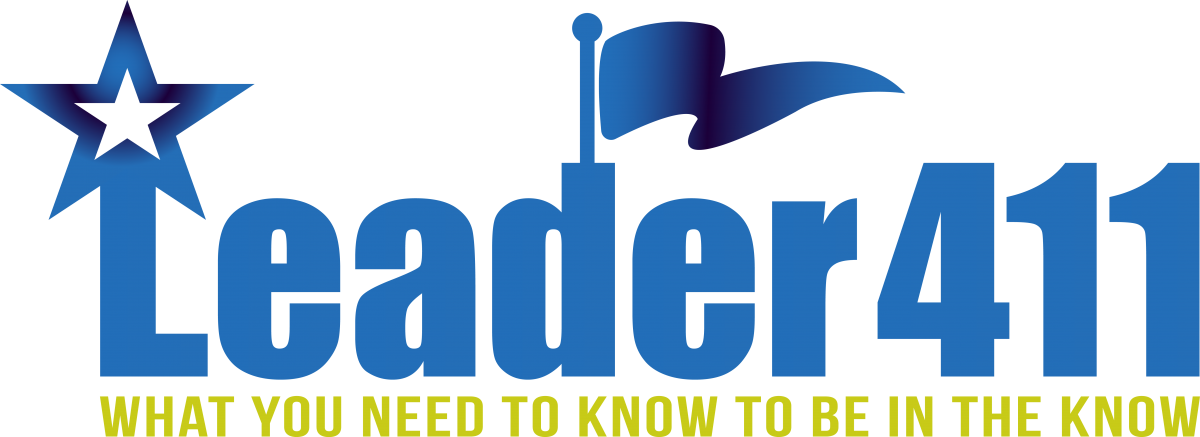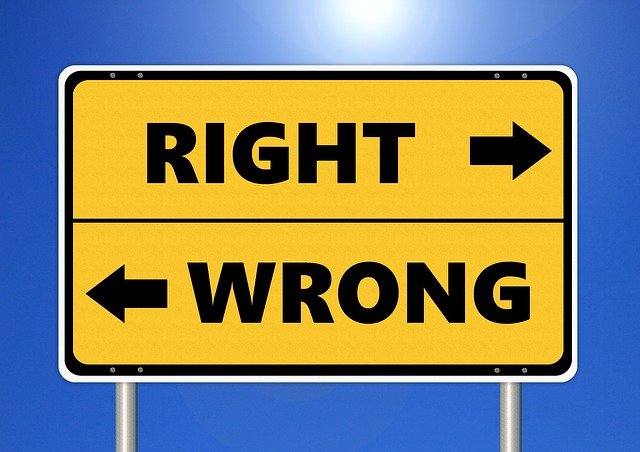(“Model Teams” is a series of stories collected from every day teams doing great work. This story is actually an example of ‘what not to do’ from a team that normally exhibits extremely high performance in very dangerous situations. It’s a story they wanted to share to show that everyone can accidentally find themselves in unethical situations when they let their guard down.)
Ethics is a major topic in business. While we discuss it in the safe, classroom environment what many students do not understand is that it sneaks up on you. In the classroom, you think “Oh, I would never…” just like couples without children that would never let their kids cry at a grocery store. Sometimes the situation sneaks up on you and you find yourself on the wrong side of a difficult situation. That’s why it is important to discuss ethics regularly and openly, as a reminder to evaluate the decisions in our lives and make sure we are still on the right track. That is the purpose of this article.
This story comes from the Immigrations and Customs Enforcement (ICE) Homeland Security Investigations, a tremendous division of US Security forces that protects us every day. We don’t hear much about them, which is exactly how it is supposed to be. Fortunately for me, working on this “Model Teams” project has introduced me to some amazing people and great stories of teamwork and dedication.
The Immigrations and Customs Enforcement (ICE) Homeland Security Investigations men and women are busy protecting us from every day disasters, some of which will be detailed in future articles. I am grateful for this great team that works with its international counterparts to keep us safe. This story, however, details how even those who have made their careers busting people for making poor decisions can also slip into poor decisions themselves. The intent of this article is not to harm reputations, but rather to highlight the susceptibility of anyone’s weakness to make a poor decision when ethical defenses are let down.
Background: Explanation of the Departments
Following the attacks of September 11, 2001, the US looked for ways to strengthen its borders against threats against Americans. During a review of risks, one item was glaringly obvious. The United States has several organizations all trying to prevent dangerous acts from entering US Soil:
- US Department of Agriculture, Animal and Plant Health Inspection Service – Protection from biological dangers. The US is home to an ecosystem that could be quickly overrun if inundated with various species from abroad. People come here to remove our endangered plants as collectibles (Saguaro cacti) and people import very dangerous chemicals and other biologicals into the US.
- US Border Patrol – The most recognizable organization and what people most often think of when they hear US Customs and Border Protection. Smuggling people and drugs in and out of the US is a multi-billion dollar business. This organization exists to prevent it.
- US Customs – Protects trade and enforces tariffs.
- US Immigration – Much of the media focus of this department is on their efforts to reduce illegal immigration, but they’re also in charge of legal immigration, approving VISAS to the millions of applicants every year.
These four departments worked to protect the United States borders, but their information was not shared. Their agents needed to be unified under a single banner to facilitate cooperation and communication. On March 1, 2003, the Department of Homeland Security (DHS) was created along with the unification of the US Department of Agriculture, Animal and Plant Health Inspection Service, US Border Patrol, US Customs and US Immigration.
Today, the DHS employs 240,000 men and women in a variety of different fields in the US and around the world, preventing danger from entering the United States. Under the new Department of Homeland Security, Immigration and Custom Enforcement (ICE) is one of the smallest departments with only 20,000 employees. ICE’s Homeland Security Investigations (HIS) division employs about 50% of ICE agents. ICE’s HSI division focuses on protecting the US from:
- terrorism
- national security threats
- narcotics smuggling
- transnational gang activity
- child exploitation
- human smuggling and trafficking
- illegal exports of controlled technology and weapons
- money laundering, financial fraud and scams
- worksite and employment crimes
- cybercrime
- intellectual property theft and trade fraud
- identity and benefit fraud
- human rights violations
- war crimes
With only 10,000 employees filling 250+ offices in the US and 80 offices outside the US, unfortunately, they’re kept very busy. This story is about the Miami office, one of the busiest and one of the most dangerous US locations.
At first, everything was good
There is always something going on in Miami, Florida. Its diverse neighborhoods, art-deco architecture, beautiful scenery, large events, good vibes and great food make Miami a hot spot for celebrities. Will Smith used to be a frequent visitor. He even wrote a song about it. He filmed all three movies in his Bad Boys franchise there. Also filmed in Miami was sports drama Any Given Sunday, box office comedy hit There’s Something About Mary, Robin Williams’ hit The Birdcage, and many other notable TV shows and music videos taking advantage Miami life. This story is about Miami Vice, a movie released in 2006 starring Colin Farrell and Jamie Foxx.
Authenticity helps “sell” the story. In order to show authenticity, the movie casting team put out an open call to all local HSI drug enforcement personnel to fill in as extras throughout the movie. It was a chance for the HSI staff interested in participating in the movie to enjoy the movie-making process and the craft services provided to the law enforcement extras. The Special Agent in Charge approved as long as it was during their off time. Over one dozen HSI professionals signed up.
The HSI extras were really enjoying their time on set. They were treated like guests and welcomed by the cast and crew. They were even hailed as “the real heroes” in the movie as the movie crew recognized that the HSI employees were the ones that really do what Colin Farrell and Jamie Foxx were only pretending to do. They were made to feel comfortable and welcome. Even the two stars began hanging out with them to get a better feel for their characters they were hired to portray. Again, authenticity matters.
Ethical Escalations
The stars might have gotten a little too close. Within a short time, the stars were regulars around the HSI. They were hanging out with the crew and joining them at happy hours. The Special Agent in Charge, who initially resisted the Hollywood glamour, joined the fun. He was even given a line in the movie! Everything seemed great until the stars wanted to get to know their characters even more. They wanted to see the top secret HSI outposts.
Drug enforcement organizations have secret outposts in order to catch the drug deals in action. The outposts are often warehouses or stores made to look real, but really they’re wired with millions of dollars of technology. They’re staffed by undercover personnel. The outposts are critical to drug enforcement operations in Miami.
The HSI depends on the secrecy of outposts not only for enforcement, but also for safety. If the identity of the personnel or the outposts were to fall into the wrong hands, then it could lead to an interruption in current cases, a decrease in future cases and danger for all personnel involved. It would also cost the department millions of dollars in time and equipment in abandoning one outpost and finding a new location with a full setup for continued operations, while not attracting any attention to the local drug cartels and czars in the area. Exposing such a secret could set the organization back for months.
It is unclear if it was HSI personnel trying to impress Collin and Jamie or if was the actors that requested the visit. This really doesn’t matter though. HSI personnel escorted Collin and Jamie to the outpost.
The Violation
For months the HSI personnel allowed the two stars into their tight circle. If they requested something for authenticity’s sake, it was granted. This last request was a big one, with the potential to do tremendous harm to the operation. Looking back, the HSI crew regret their decision, but at the time they didn’t realize the danger. They trusted Colin, Jamie and the rest of the crew. They didn’t feel it was any big deal. No one would know, right? It was just real quick, just one outpost, right?
It started with one, then it led to a few more. In a very short time, the personnel were not only showing the outposts, but they were actually pointing out the observation points and strategic setups of the outposts. The outposts were compromised.
Lessons Learned: It Can Happen to Anyone
This is not a story about deviant employees looking to cause great harm for their selfish behaviors. These were employees that were caught up in the moment and emotions of Hollywood. Initially everything was fine, but eventually, after they had let their guard down, they made poor decisions. There are two main lessons from this story:
- Fortunately, there were many that avoided joining the film team and spoke up against the actions taken by the Special Agent in Charge and some of his team. At the time, the personnel that were involved as extras were upset that someone had ratted them out. They lied to internal investigators and sought to act out against those that had spoken out. Eventually they were able to realize that their mishaps had endangered far more than their individual reputations. Lives of those undercover in the fields, financial resources of the department and the reputation of the team suffered far greater harm. Eventually many expressed gratitude for those that spoke up and prevented even further damage.
- Unethical behavior flows from the top. While some may make poor decisions because they’re disgruntled, those tend to be singular incidents. When a leader decides to make a series of unethical decisions, many follow believing and trusting that if their leader is involved, then it’s probably fine. The damage has the potential to be far greater when the leader is involved.
We need to be confident about our own morals and values. Fortunately in this situation and in many others in recent news, those that were confident and courageous spoke up and prevented greater harm. We should be grateful that those people are strong when we may be weak.
As an organization, we need to provide annual ethics reviews that are based on conversations and group communications, instead of an unengaging annual slide deck or video with a short quiz afterward. While these are helpful, they can easily be skipped or ignored. We need to push the importance of ethics in decision making and encourage those to speak out by holding training with everyone involved. Having such trainings not only increase awareness of what behavior is unacceptable, but it also provides opportunities for reflection on current decisions and projects as well as a clear communication path for escalation of potential unethical behavior.
I don’t think it’s discussed enough that we are all capable of unethical behaviors. It starts when we let our guard down. In the classroom and even while reading this article it may be black and white thinking “Oh, I would never…” but the reality is it sneaks up on us incrementally until we reach a point where we need to make a decision. Do we go forward and ignore it or go back and fix it. Hopefully your team will be strong enough to fix it.


